When building a DIY star tracker, consider NEMA 17 motors for their balance of torque (40-60 N·cm) and precision. For lightweight setups, 28BYJ-48 motors offer a budget option. Heavier DSLRs need at least 0.5 Nm torque, while 3kg payloads require 1+ Nm motors like NEMA 23. Pair your motor with a microstepping controller for smoother tracking, and use a dedicated power supply rather than Arduino’s 5V pin. The following guide reveals which motor will perfectly match your astrophotography needs.
NEMA 17 Motors: Balancing Torque and Precision for Star Tracking
When building a DIY star tracker, selecting the right motor forms the foundation of your entire system, and NEMA 17 stepper motors emerge as the sweet spot for most astrophotography enthusiasts.
With torque ratings between 40-60 N·cm, these motors easily support DSLRs and small telescopes without straining.
You’ll appreciate the inherent precision of NEMA 17s, which offer 200 steps per revolution (1.8° per step).
When paired with a 100:1 planetary gearbox, you can achieve an impressive 0.00018° resolution per step—perfect for tracking celestial objects smoothly.
For even better results, implement microstepping to reduce vibrations and guarantee smoother motion during long exposures.
The widespread availability and affordability of NEMA 17 motors make them an ideal choice for your star tracker project.
28BYJ-48 Motors: Ultra-Budget Options for Simple Trackers
The 28BYJ-48 motor requires minimal wiring effort, connecting directly to a ULN2003 driver board with its integrated 5V power supply for plug-and-play convenience.
You’ll need basic Arduino programming knowledge to implement the correct tracking rate, typically using the AccelStepper library for smooth rotation control.
While these motors offer an ultra-affordable entry point, you’ll face significant payload limitations with their modest torque output, restricting your setup to lightweight cameras or requiring additional gearing for heavier equipment.
Wiring and Power Supply
Proper wiring and power management for your 28BYJ-48 stepper motor is essential for building a reliable DIY star tracker. When connecting your motor, verify you’re following the correct four-phase sequence when attaching leads to the ULN2003 driver board. Incorrect wiring will result in erratic movement or complete failure.
Don’t power your 28BYJ-48 directly from your Arduino’s 5V pin. The current requirements exceed what the microcontroller can safely provide. Instead, use an external power supply rated between 5V and 12V to drive your motor effectively. This verifies you’ll achieve smooth tracking without brownouts or performance issues.
The ULN2003 driver acts as the perfect interface between your Arduino and the motor, handling the necessary current while protecting your microcontroller circuitry during those long exposure tracking sessions.
Programming Setup Required
Setting up the programming environment for your 28BYJ-48 stepper motor requires minimal coding knowledge, making it an ideal choice for first-time star tracker builders. You’ll need an Arduino board and the AccelStepper library to control your motor effectively.
| Component | Function |
|---|---|
| Arduino | Provides the control interface |
| Driver board | Manages power delivery to motor |
| AccelStepper library | Enables speed/direction control |
| Microstepping code | Improves tracking precision |
When programming your setup, you’ll need to account for the motor’s 64-step revolution (5.625° per step). Implementing microstepping in your code helps compensate for the motor’s low torque at higher speeds. Most DIY trackers also incorporate gear reduction in both hardware and programming to achieve the precise sidereal rate needed for long-exposure astrophotography without star trails.
Torque Vs Weight Limitations
While exceedingly popular among DIY enthusiasts, the 28BYJ-48 stepper motor presents important torque limitations you’ll need to evaluate before building your star tracker.
With approximately 34 N·cm of torque, you can reliably support payloads up to 1 kg—sufficient for compact cameras and basic astrophotography setups.
The motor’s 64:1 gear ratio provides precise movement control at 5V, essential for accurate celestial tracking. However, you’ll encounter performance issues if you exceed the weight capacity, as the motor simply can’t deliver the necessary torque for heavier equipment.
If you’re planning a more substantial rig, consider upgrading to higher-rated stepper motors or implementing additional gear reduction systems. Proper weight distribution across your tracker will also maximize the performance of whatever motor you choose.
High-Resolution vs. Geared Motors: Making the Right Choice
Choosing between high-resolution and geared motors requires you to assess your specific tracking precision needs against payload requirements.
While high-resolution steppers offer smoother movement with their 200+ steps per revolution, they’ll sacrifice torque—a critical factor when mounting heavier camera equipment on your DIY star tracker.
You’ll also need to take into account your power budget, as achieving the recommended sub-arc-second precision through either microstepping or planetary gearing will impact your battery life differently during those long night photography sessions.
Resolution Needs Assessment
How precisely your DIY star tracker follows celestial objects determines the quality of your astrophotography. For ideal results, you’ll need resolution under 1 arc-second—a challenging but achievable goal with the right stepper motors.
Standard stepper motors offer 200 steps per revolution, but this alone won’t provide sufficient precision. You’ll need to assess your torque requirements and payload capacity before selecting your approach.
Consider either implementing a gear ratio of at least 1:8400 or using planetary gears (100:1) to achieve the necessary resolution.
While microstepping improves smoothness, maintaining at least 20-25 microsteps per second prevents jitter during long exposures.
Remember that higher microstepping values may compromise positional accuracy, so balance these settings carefully against your precision needs.
Torque vs. Step Size
The fundamental trade-off in star tracker motor selection lies between torque and step size precision. When building your DIY star tracker, you’ll need to balance these competing factors based on your specific needs.
Motors like the 28BYJ-48 offer excellent step precision but may lack sufficient torque for heavier payloads. Adding gear reduction through ratios of 100:1 or 400:1 greatly enhances step resolution while potentially improving torque. However, excessive gearing can introduce backlash issues.
For heavier equipment, consider N20 gear motors that deliver high torque at low RPMs. Remember that higher payload capacity often requires sacrificing some step precision.
Your choice should reflect your primary use case—lightweight camera setups can prioritize precision, while telephoto lens configurations demand greater torque to prevent tracking errors during longer exposures.
Power Budget Considerations
When planning your DIY star tracker, power consumption becomes a critical factor that directly affects portability and field operation time. The battle between high-resolution steppers and geared motors centers on balancing precision with power efficiency.
- Resolution vs. Power – High-resolution steppers offer precise tracking but typically draw more current, especially when paired with complex gearing systems.
- Gearing Advantages – A motor with 100:1 reduction ratio can considerably reduce your power budget while maintaining sufficient torque.
- Motor Specifications – Always check stall torque and current draw ratings when selecting motors; higher torque motors consume more power but handle loads better.
- Mechanical Efficiency – A well-designed tracker structure reduces strain on motors, allowing you to use lower-power options without sacrificing performance.
Torque Requirements for Different Camera Payloads
Selecting the right torque capacity forms the foundation of any reliable star tracker build, as insufficient power will quickly undermine your astrophotography efforts.
Insufficient torque capacity creates the perfect recipe for tracking failure and wasted imaging sessions.
For a standard 2kg camera payload, you’ll need stepper motors delivering at least 0.5 Nm of torque to guarantee stable, vibration-free tracking.
If you’re planning for heavier setups around 3kg, upgrade to motors with 1 Nm or higher torque ratings.
Remember that longer distances from the rotation axis increase torque requirements considerably. For payloads exceeding 1kg, consider gear reduction options to enhance torque while maintaining tracking speed.
While NEMA 17 motors (0.45 Nm) might suffice for lightweight configurations, heavier telescopes or camera rigs demand NEMA 23 motors with their superior 1.2 Nm torque capacity.
Microstepping Controllers for Smoother Star Tracking
Once you’ve selected the right torque capacity for your payload, your next challenge is achieving smooth, precise movement. Microstepping controllers dramatically improve tracking precision by dividing each full step into smaller increments, enabling the fluid motion essential for astrophotography.
- Resolution options – Controllers offering 1/16 to 1/128 microstepping provide the finest movement control, keeping you under the critical 1 arc-second per step threshold.
- Jitter reduction – Aim for at least 20-25 microsteps per second to eliminate the tiny jerks that can ruin long exposures.
- Tracking smoothness – Microstepping creates more fluid motor response when changing direction or speed during celestial tracking.
- Accuracy maintenance – Consider controllers with feedback systems to correct the slight positional inaccuracies that microstepping can introduce during critical tracking tasks.
Power Management Solutions for Field Operation
Reliable power supply represents the lifeblood of any DIY star tracker during field operations.
When building your tracking system, you’ll need a rechargeable lithium-ion battery that delivers between 5-12 volts to guarantee compatibility with most stepper motor drivers.
Don’t power motors through your Arduino’s 5V pin, as its limited amperage can cause performance issues. Instead, implement a proper power management system with voltage regulators to maintain consistent power and prevent damaging spikes.
For extended astrophotography sessions, choose a power bank with at least 10,000mAh capacity. This provides sufficient runtime for your motors and electronics.
Include a switch or relay in your setup so you can easily disconnect power when not tracking. This prevents accidental current draw and extends your battery life during field use.
Mounting and Vibration Control Considerations

To achieve crisp astrophotography images, your mounting system must effectively mitigate vibrations that can ruin long exposures. Proper alignment of the rotation axis with your setup’s center of mass is fundamental for reducing motor strain and preventing unwanted movement during tracking.
- Balance your weight distribution carefully across the mount to minimize torque requirements and maintain consistent tracking performance.
- Install vibration isolation components like rubber mounts or damping pads between the stepper motors and your tracking platform.
- Secure all mounting hardware with appropriate torque – tight enough to prevent flex but not so tight that it creates stress points.
- Never use motors as structural supports – always mount them to rigid platforms that can handle the mechanical load independently.
Frequently Asked Questions
How to Choose the Correct Stepper Motor?
Choose a stepper motor with high step count (200+), low RPM (1-2), good torque (2-3kg capacity), and compatibility with gear reduction systems. You’ll want one that can disable microstepping during slewing operations.
How Many Stepper Motors Can a TB6600 Drive?
A TB6600 can drive only one stepper motor. If you’re building a project needing multiple motors, you’ll need one driver per motor. They’re designed for single-motor operation, not multiple simultaneous connections.
Which Stepper Motor Is the Best?
The “best” stepper motor depends on your specific needs. You’ll want to evaluate torque requirements, precision needs, and budget constraints. NEMA 17 motors offer a good balance for most projects requiring reliability and precision.
What Are the Disadvantages of Stepper Motors?
Stepper motors cause vibrations affecting image quality, lose torque at high speeds, introduce inaccuracies with microstepping, require complex programming, and often lack precision gearing options for accurate astronomical tracking below 1 arc-second.
In Summary
You’ve now got all the information you need to select the right stepper motor for your DIY star tracker. Whether you choose the versatile NEMA 17, the budget-friendly 28BYJ-48, or another option, remember to match your motor’s torque to your camera payload and pair it with appropriate controllers. With proper power management and vibration control, you’ll capture stunning night sky images with your custom-built tracking mount.
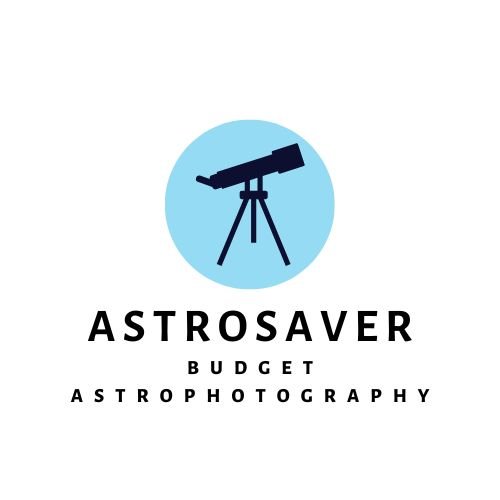
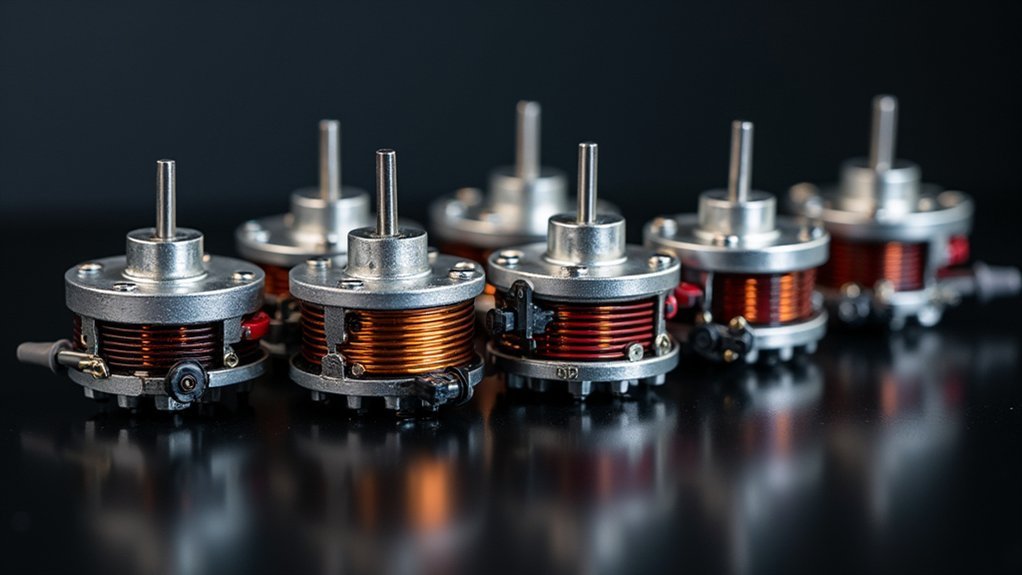
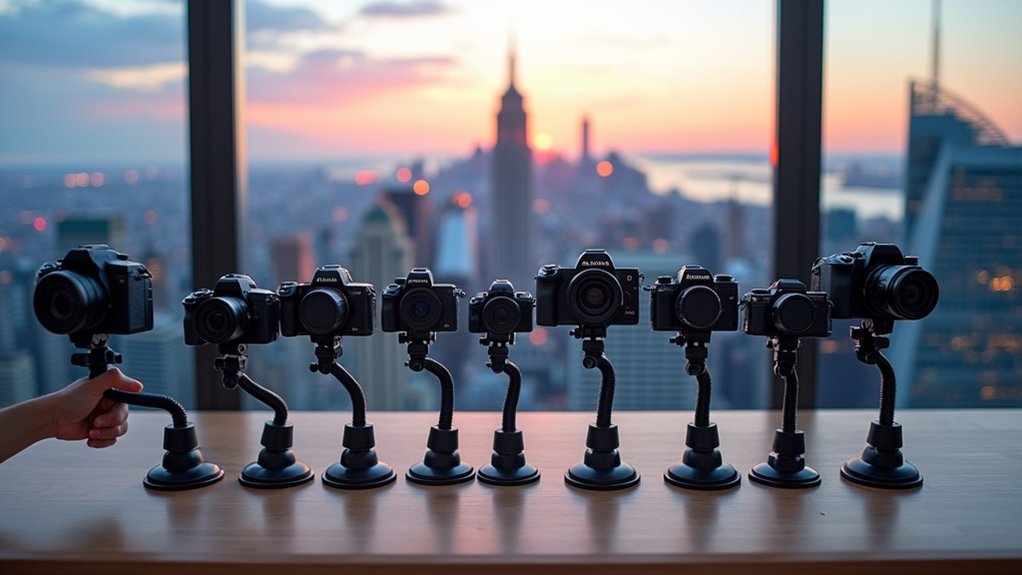
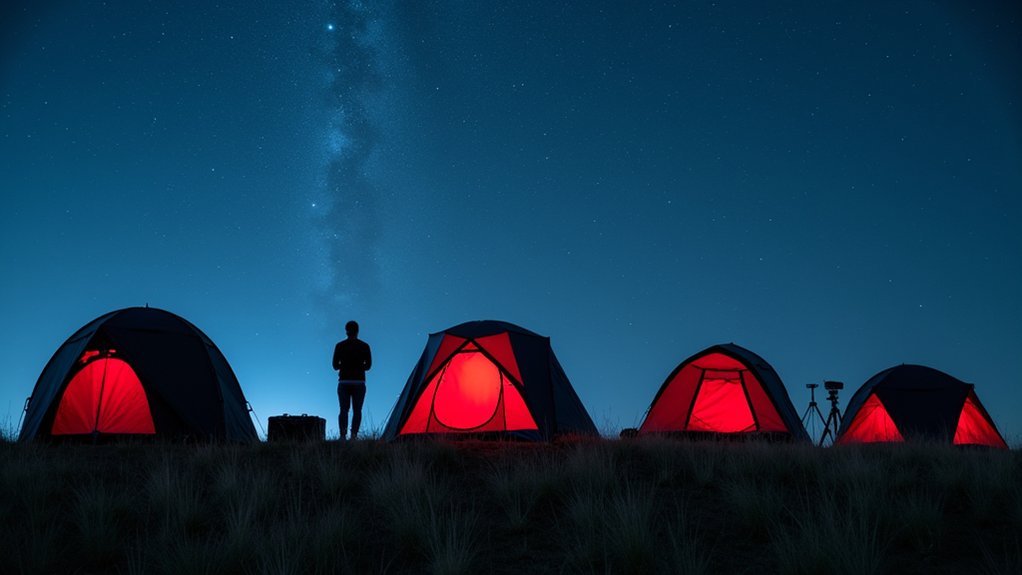
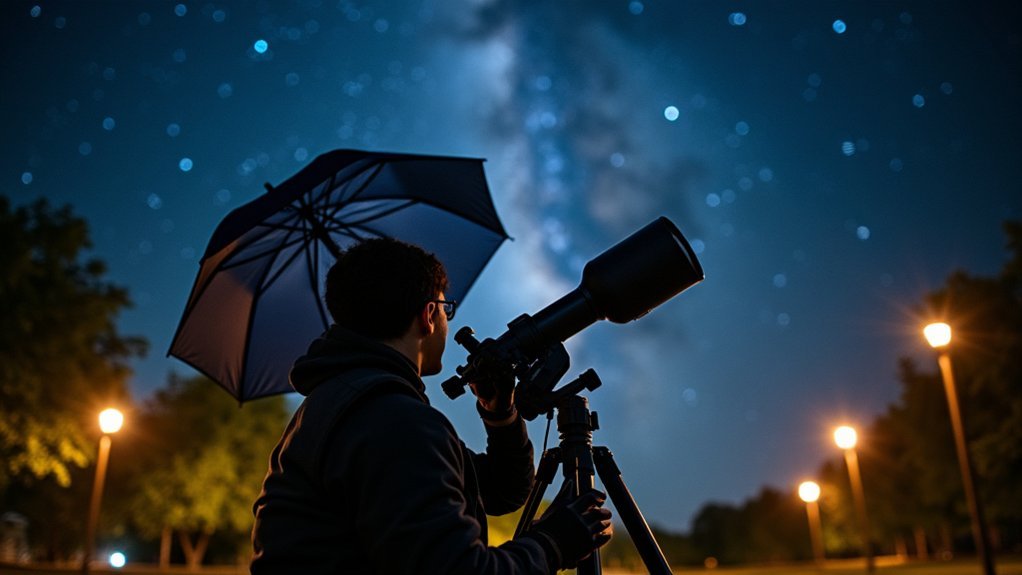
Leave a Reply